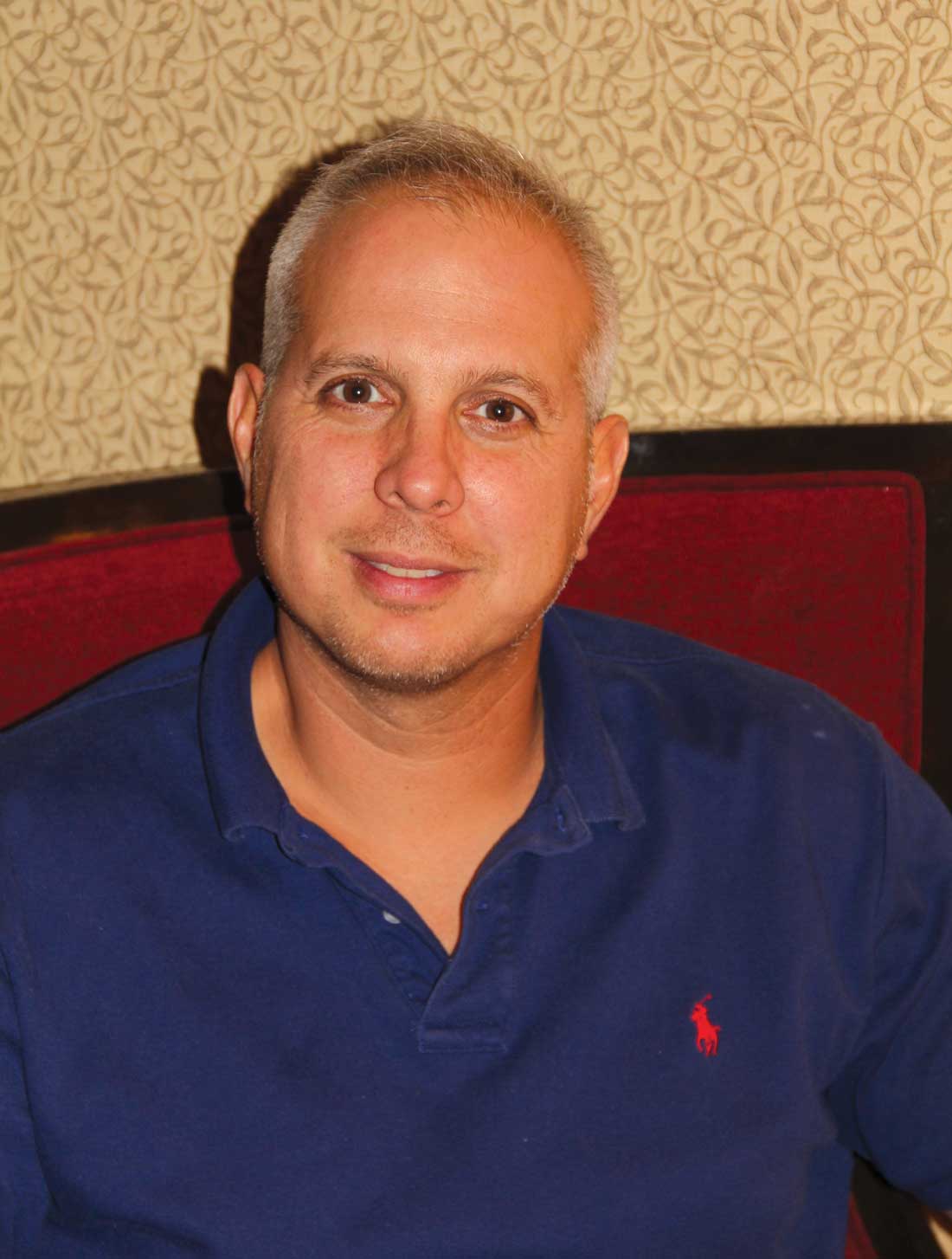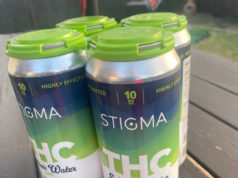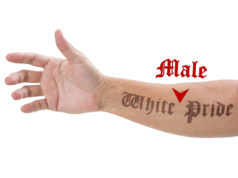In March, Mike Banta, head of Blue-bonnet Place Neighborhood Association, received what seemed to him a curious e-mail. It came from someone named Kyle Jenson, representing an organization called Steer FW, and outlined several ways Steer wanted to enhance Bluebonnet Circle, through a volunteer neighborhood improvement program called Better Block.
Some of the changes Jenson proposed included better walkways between businesses, crosswalks, landscaping, more shade, more parking, a dog park, and construction of a stage for community events.
Banta replied that he was interested in hearing more and wanted to share the information with his neighborhood association, which hasn’t been active in recent years. But before he received any additional information, Steer held its first public meeting to discuss its vision for Bluebonnet Circle, near Texas Christian University.
After hearing about the meeting, Banta requested a copy of the minutes so he could share them with local residents. Jenson told him that no minutes were kept.
“I would have liked to meet with my neighborhood [before the first meeting], Banta said. “Now [Steer] is organizing the meetings,” he said.
Jenson’s message to those who attended the meeting was “Let’s get it rolling and see where it goes,” he said.
Many residents feel that the project has started rolling too quickly and without their input. Residents like Banta feel as though they’re not getting a say in what’s being proposed. They believe that Steer FW, a young-professionals’ group created by Mayor Betsy Price (though not officially associated with the city) is coming into their neighborhood unsolicited.
Critics of Steer, such as Bluebonnet resident George Appleby, point out that the city has already allocated more than $9.6 million in its 2014 bond proposal to repair Bluebonnet Circle’s streets and crosswalks. Steer Fort Worth, he said, wants to close a traffic lane in order to accommodate more parking.
“My point is the city had already decided what they are going to do, and [Steer FW] is coming in and pushing for a lane to be closed for parking,” he said. “They have not given a whole lot of consideration to the residents. We do not want a SO7 circus-type neighborhood.”
Area business owners, however, are thrilled at the prospect of breathing new life into the area.
Conner Kirkpatrick, owner of The Bottom Bar and Grill, said that he thinks the proposed changes will be good for both businesses and residents. He lives in the area.
“The circle hasn’t been improved in years,” he said. “We’re just happy there are people getting behind it.”
According to its website, Better Block is an “open-sourced project that is free to re-use and build upon.” The goals are to improve safety, access, and curb appeal and to provide facilities such as dog parks and playgrounds. Any group is encouraged to adopt these ideas and implement them on a volunteer basis.
At a meeting organized by Steer at the Mellow Mushroom restaurant on Aug. 5, Jenson praised the success of a Better Block program in the Riverside area, saying that his organization had a hand in improvements along Race Street.
But organizers of the Race Street project said Steer had nothing to do with that initiative.
“I visited with Steer Fort Worth about [Better Block], but they were not involved in the one we did in [the Riverside area],” said Debbie Stein, who oversaw the project.
For Race Street, Stein was able to obtain $80,000 in city grant money that had originally been allocated for a canceled project at the historic McAdams building a few blocks away. Stein said she expects the funds to be disbursed this month and used for “bike lanes, crosswalks, on-street parking, and a bike corral.”
Beyond what’s already in the bond proposal, there is currently no source of funding identified for the Bluebonnet Circle project, but Jenson said he hopes that a September event will change that.
Stein said Bluebonnet Circle might benefit from a Better Block program, but that it would be more effective if the impetus came from within the neighborhood instead of from an organization created by the mayor.
“Better Block programs were meant to be do-it-yourself urbanism” and not top-down government programs, she said.
Appleby, a 30-year resident of the area, attended a July 20 Steer meeting at Tiff and Andi’s Place on the circle, one of two meetings organized by Steer since March.
“I did not see a lot of the local residents,” Appleby said. “It seemed to me that the meeting was a bit staged.”
Jenson said that there has been a lot of misinformation circulated regarding Steer’s efforts. “We are putting power back into the community and not waiting for the city,” he said.
He said Steer has the support of 30 residents from Bluebonnet Hills, five residents from Bluebonnet Circle, and 10 local business owners. The group has received feedback from more than 70 online surveys.
Jenson said his group decided to approach Bluebonnet Circle with enhancement plans after considering numerous parts of the city. He said the area met the Better Block criteria, which includes the circle’s underutilized park, businesses with a high rate of turnover, and an acceptance of change by residents.
That last part may prove more difficult than he anticipated.
Jenson said his first goal is to show residents what is possible in their neighborhood. The next step would be for neighbors to ask the city to step in and support the project. “They can get a bond for improvements,” Jenson said. “These are all things that are valid and can get into a city budget.”
Appleby said he believes that business owners are supportive of Steer’s efforts because they would get more parking.
“Sounds kind of strange to me to present this program as making it a more ‘vibrant and walkable’ neighborhood, while the plan seems to be more traffic, bars, and less of a park,” he said.
Business owners like Kirkpatrick are happy that Steer’s plan is addressing safety and parking. Crossing the street, he said, is a risky proposition right now.
Julian Becque, a manager at Mellow Mushroom, said his business has received complaints from nearby residents about restaurant parking spilling over in front of their homes. The Better Block plan, he said, could alleviate some of that.
“We’re very supportive of anything that could bring more people to the circle,” he said.
The next scheduled Better Block meeting is an Aug. 17 “build-it” workshop to prepare for a showcase event on Sept. 21. Volunteers will construct mockups of a fountain, street crossings, and business facades, to allow local residents to envision what the spiffed-up area could look like.
Local residents will have a chance to talk directly to city officials at the Steer-organized September event. Jenson assured a Fort Worth Weekly reporter that “anyone and everyone who is important to the city” will be there.
At the Aug. 5 meeting, attended by 40 to 50 people, Jenson laughed off some tense questioning. “I know that you all are vocal. I get that,” he said.
Residents were glad to hear that Steer’s proposal wouldn’t alter the traffic circle itself or remove any trees. Jenson made concessions such as canceling a proposed outdoor performance area after residents objected.
The crowd fluctuated between skepticism and appreciation for Steer’s volunteer efforts. Several people were learning for the first time about the proposed changes.
Madison Hogue, a volunteer for Steer, said that the residents were “slowly coming along” after some initial misunderstandings.
Residents around Bluebonnet Circle have what they feel are more pressing concerns, none of which are addressed by the Better Block Program. “Recently we have had an upswing of vandalism, numerous traffic violations, and underage drinking,” Appleby said.
“We want what our neighbors want: less traffic and less noise,” said Genna Banta, local resident and Mike Banta’s wife.
“They present a good picture, but we will have to see,” said resident Claudia Blalock.
Fort Worth writer Edward Brown can be reached at ejb0017@yahoo.com.













There is no real “brouhaha”. Permanent residents of the neighborhood are generally very supportive of the event and the possibility of activating the space around the circle into a people friendly place. SteerFW is well known program to anyone who keeps up with local news. Frankily, there efforts are a long time in the making. Furthermore, the circle was designated an urban village many years ago. This is exactly the type of action that helps make that vision a reality. Slow down traffic around the circle. Make it safer to bike and walk. Don’t allow the park to remain isolated. Connect it with the people who live in the neighborhood.
Yep, that’s just what’s needed, University Drive is 4 lanes on both ends of the circle and on the circle itself, and now some people with a lack of vision want to choke it down to one lane in each direction, not too smart in my book. It’s the same moronic policy that spent millions widening West Rosedale out to 6 lanes in the hospital district over the past 10 years and 1 year after being completed is now choking it back down to 4 lanes with some stupid planter boxes built into the curbs and gutters. The trees and shrubs will be vandalized 30 minutes after sundown the day they are planted. If businesses want more parking, let them buy the properties adjoining theirs as they come up for sale and make that into more parking. Next thing you know, some doofus will have a traffic light at every side street entering the circle.